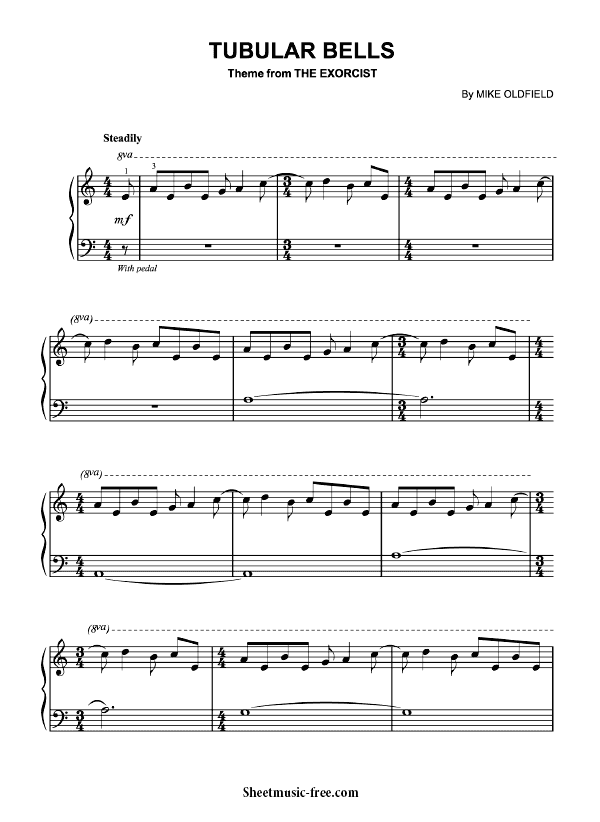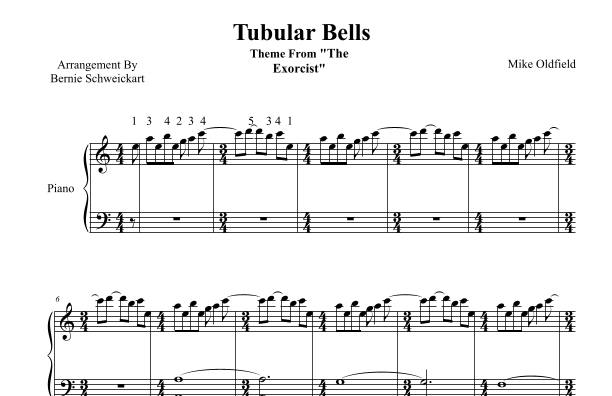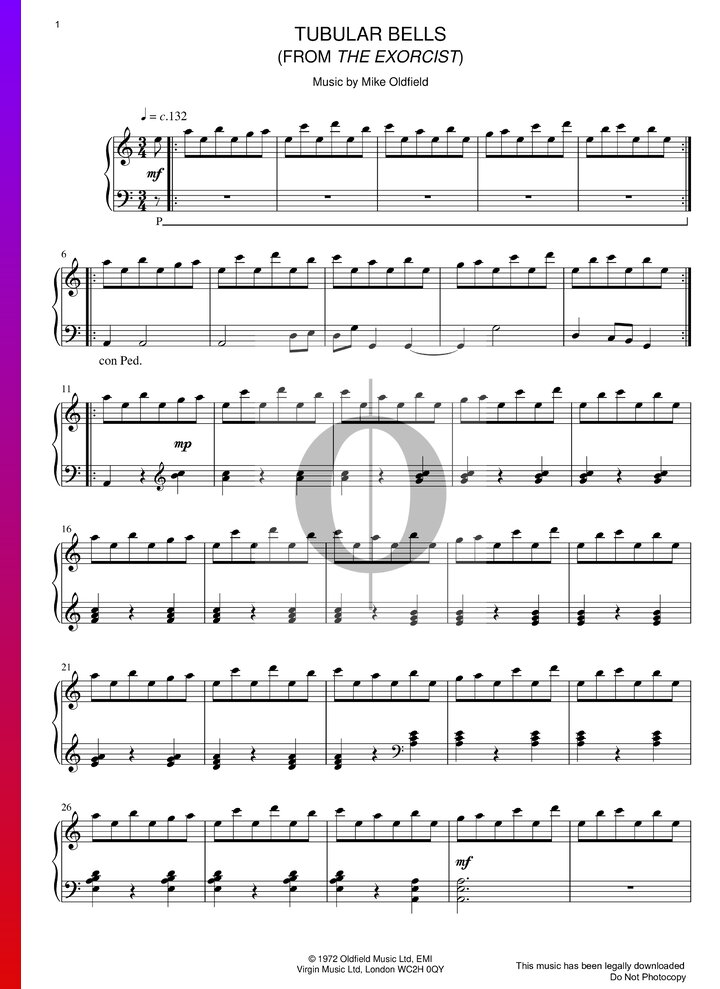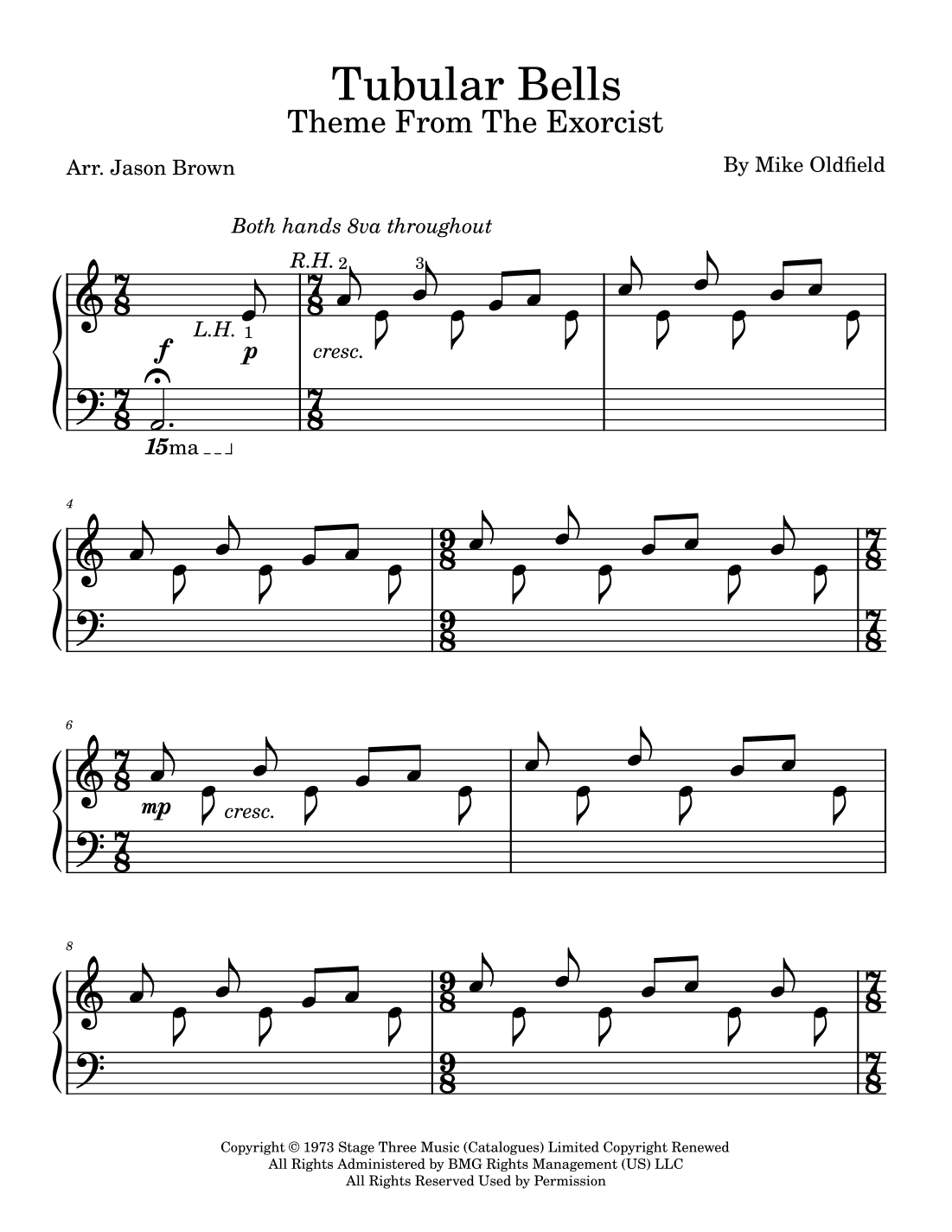Tubular Bells Piano Sheet Music With Letters
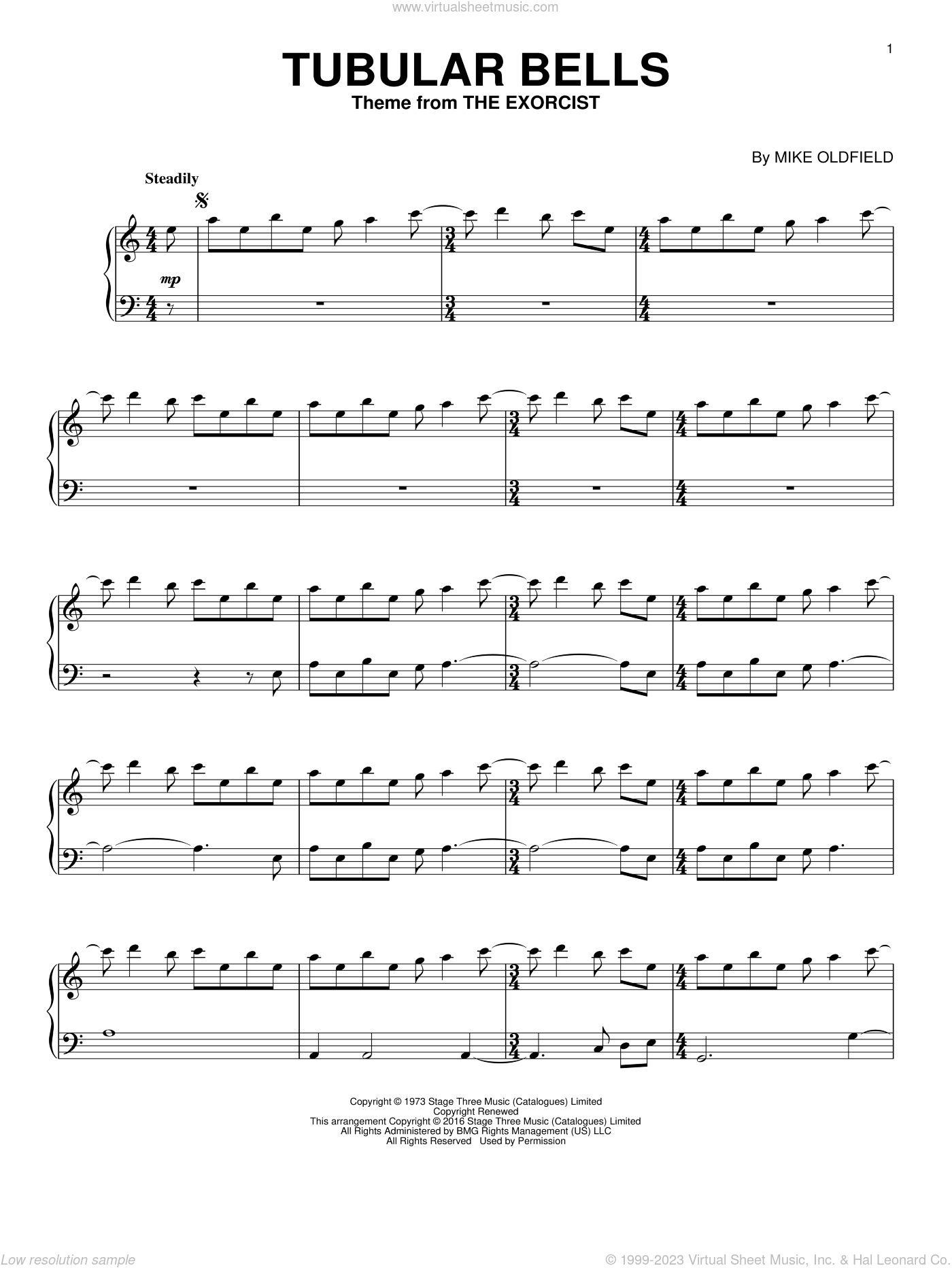
Okay, let’s talk about something you might not expect: Tubular Bells. Yes, that iconic, slightly spooky, very long piece of music often associated with *The Exorcist*.
But hold on! We're not diving into horror movie soundtracks today. We're going to talk about *Tubular Bells* piano sheet music...with letters!
A Friendlier Approach to a Beast of a Tune
Imagine trying to learn *Tubular Bells* on piano. It's a complex piece, full of changes and not exactly a beginner’s melody. Standard sheet music can look like a chaotic flurry of notes!
Enter the genius (or perhaps slightly mad?) soul who decided to translate it all into letters. A, B, C, D, E, F, G – your good old alphabet is now your guide through Mike Oldfield's masterpiece.
Suddenly, the intimidating becomes…slightly less intimidating. It's like having a musical cheat code.
Who is this "letters" music for?
Think of it as musical training wheels. Maybe you’re a visual learner, or perhaps you’re revisiting the piano after years away. Or perhaps you never learned sheet music in the first place.
The letter system cuts through the complexity. It's not about replacing standard notation, but about offering a different, more accessible entry point. It lets you play music you may not have had access to otherwise.
It’s definitely good for kids! Playing *Tubular Bells* with letter notation will get them interested in music faster.
The Charm of Imperfection
Here's a secret: letter notation isn't always perfect. Music is more than just notes; it's about rhythm, timing, and feeling.
Letter sheets usually only show you the notes. However, think of it as a starting point, a foundation. You build upon it with your own interpretation.
Embrace the imperfections! Your version of *Tubular Bells* with letters might not be note-perfect. But it will be uniquely yours.
A Gateaway to Standard Notation
Interestingly, learning *Tubular Bells* with letters can actually lead you *to* standard notation. As you become familiar with the melodies and chord progressions, you start to recognize them on the staff.
It's like learning a language. First, you memorize phrases, then you start to understand the grammar. The letter sheet music may inspire you to read standard notation.
You might find yourself saying: "Hey, that's just a C major chord!"
A Heartwarming Twist
The story of *Tubular Bells* piano sheet music with letters is, at its core, about accessibility. It's about breaking down barriers and letting more people experience the joy of playing music.
It's about someone saying, "Hey, this music is amazing, and everyone should have a chance to play it." And then finding a creative way to make that happen.
So, next time you hear *Tubular Bells*, don't just think of horror movies. Think of the possibility of playing it yourself, letter by letter, and sharing that spooky magic with the world. You never know what musical adventures might await you!
And who knows, maybe you'll be the next musical genius to create a new take on a song you love! The world is waiting!






